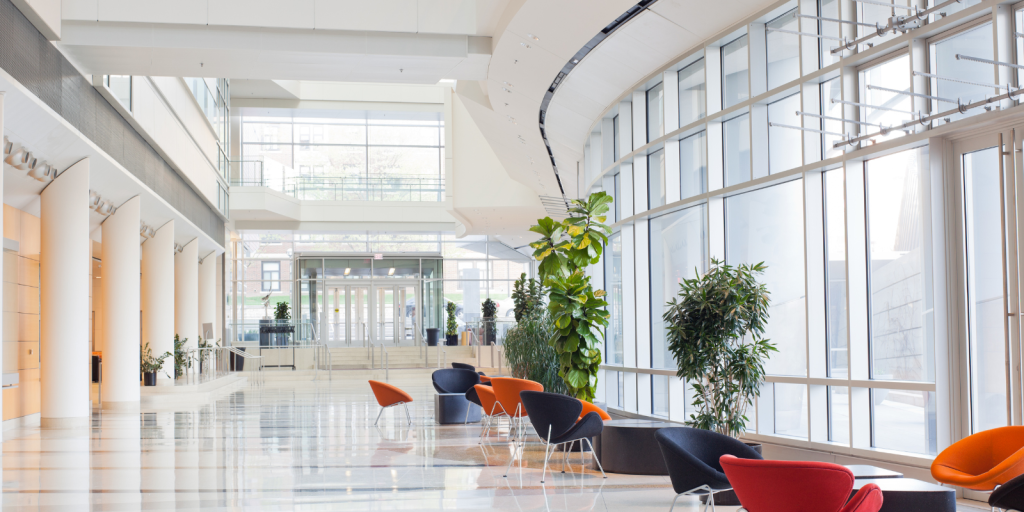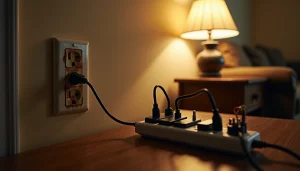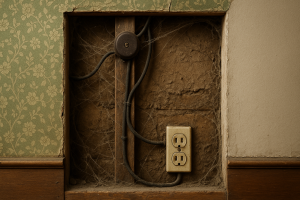Lighting is a fundamental element in any business environment, yet it is often overlooked as a critical factor in fostering productivity and enhancing workplace efficiency. The quality and design of lighting can significantly influence employee performance, morale, and even health. Inadequate or poorly planned lighting can lead to fatigue, eye strain, and reduced focus, while well-designed lighting can energize employees, create a welcoming atmosphere for customers, and even lower operational costs. Understanding the role that different types of lighting—whether natural, task, ambient, or accent—play in shaping a productive business environment is key to optimizing both employee output and customer experience.
Key Takeaways
- Natural Lighting enhances employee focus, boosts morale, and improves overall health.
- Task Lighting is essential for areas where specific work activities require concentrated illumination.
- Ambient Lighting helps create an inviting and comfortable atmosphere in business spaces.
- Accent Lighting is an effective way to highlight products, important spaces, or design elements, especially in retail environments.
- Energy-Efficient Lighting solutions not only reduce costs but also contribute to environmental sustainability while maintaining proper brightness levels.
Natural Lighting: Boosting Employee Productivity and Health
Natural light is one of the most effective forms of lighting in a business environment. Studies have shown that employees exposed to natural light are generally more focused, alert, and less fatigued throughout the day. Sunlight helps regulate circadian rhythms, which improve sleep quality and, in turn, boost productivity during work hours. Additionally, natural lighting reduces the need for artificial light, cutting down energy costs.
How to Incorporate It:
Maximize windows and skylights in your workspace to let in more natural light. Consider open layouts and glass partitions to allow sunlight to flow freely. If direct sunlight isn’t possible, light shelves or reflective surfaces can help distribute natural light deeper into the space.
Task Lighting: Precision for High-Detail Work
Task lighting is specifically designed to illuminate areas where work tasks are performed. For instance, in an office setting, desk lamps or overhead spotlights are essential for ensuring employees can see clearly while working on tasks like reading, writing, or computer work. Without proper task lighting, employees may strain their eyes, leading to fatigue and a decline in productivity.
How to Incorporate It:
Install adjustable task lights at individual workstations to allow employees to customize the lighting based on their needs. In retail or workshop settings, make sure work surfaces and displays are adequately lit with focused lighting that reduces shadows and glare.
Ambient Lighting: Creating Comfort and Efficiency
Ambient lighting is the general illumination that lights up the entirety of a business space. It provides a comfortable level of brightness without glare, enabling employees and customers to move safely and efficiently through the environment. Proper ambient lighting can create an inviting atmosphere that fosters collaboration and productivity.
How to Incorporate It:
For offices, consider using LED overhead lights that offer a soft, even distribution of light. In restaurants and retail stores, ambient lighting can be achieved with a combination of ceiling lights, wall sconces, or even chandeliers, depending on the mood you want to set. Aim for a balance between too bright and too dim to ensure a comfortable working or shopping experience.
Accent Lighting: Highlighting Key Areas and Products
Accent lighting is used to draw attention to specific features or areas within a business space. In retail settings, accent lighting can highlight displays, products, or promotional materials, influencing customer focus and engagement. In offices, accent lighting can highlight art, branding elements, or key architectural features to enhance the overall aesthetic.
How to Incorporate It:
Incorporate spotlights or track lighting to accentuate product displays or company signage. Consider using warm, subtle lighting to highlight architectural features or special areas such as meeting rooms or executive offices. In restaurants, accent lighting can create a dramatic effect on artwork or featured menu items.
Energy-Efficient Lighting: Reducing Costs and Improving Sustainability
One of the most important factors for businesses when considering lighting is energy efficiency. By using energy-efficient lighting such as LED bulbs, companies can significantly reduce their energy consumption and lower costs. Energy-efficient lighting also produces less heat, reducing the strain on HVAC systems and contributing to an overall more sustainable business operation.
How to Incorporate It:
Upgrade your business lighting to energy-efficient LEDs or CFLs (compact fluorescent lights), which provide long-lasting, bright illumination with a lower energy footprint. Consider adding dimmable lights and motion sensors in areas like hallways, bathrooms, and storage rooms to reduce energy consumption when these spaces are not in use.
Frequently Asked Questions
1. How does lighting affect employee productivity?
Proper lighting can reduce eye strain, improve focus, and enhance overall comfort, making employees more productive and less likely to experience fatigue during the workday.
2. What is the best lighting for office spaces?
A combination of natural light, task lighting, and ambient lighting works best for office spaces. Adjustable task lights allow employees to customize their workspace, while overhead lighting ensures even illumination throughout the office.
3. How can I make my business lighting more energy-efficient?
Switch to energy-efficient lighting options like LEDs, and consider installing dimmers, timers, or motion sensors to reduce unnecessary lighting when spaces are not in use.
4. Why is natural lighting important in the workplace?
Natural lighting improves mood, reduces stress, and boosts productivity. It also helps employees maintain regular sleep patterns, which contributes to overall well-being and better focus during work hours.
5. What role does accent lighting play in retail environments?
Accent lighting is used to draw attention to specific products or displays. It enhances visual appeal and can influence customer buying behavior by making certain items stand out more prominently.
Enhance Your Business Environment with Martin’s Electrical & Lighting Company
Lighting is far more than just a way to illuminate a space. It has a profound impact on employee productivity, customer experience, and even your business’s bottom line. By incorporating the right balance of natural, task, ambient, and accent lighting, you can create an environment that fosters focus, creativity, and comfort, all while reducing energy costs.
For businesses looking to upgrade their lighting systems, Martin’s Electrical & Lighting Company offers expert solutions tailored to your specific needs. With over 25 years of experience serving Los Angeles, Orange County, and San Bernardino County, we specialize in designing and installing custom lighting solutions that enhance productivity and create the perfect atmosphere for your business. Contact Martin’s Electrical & Lighting Company today for a free estimate and let us help you transform your workspace into a well-lit, efficient, and productive environment!





